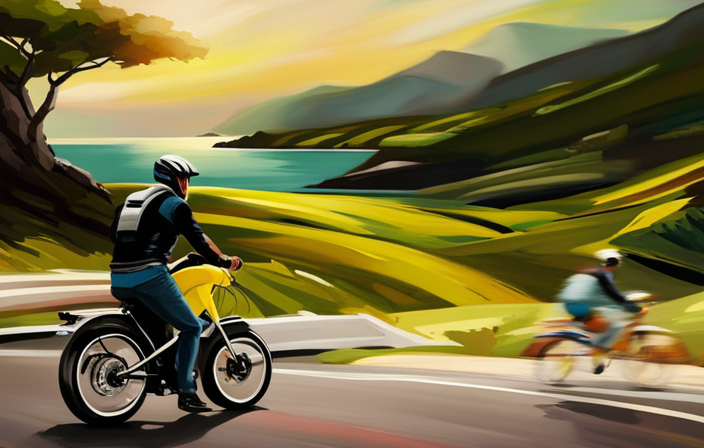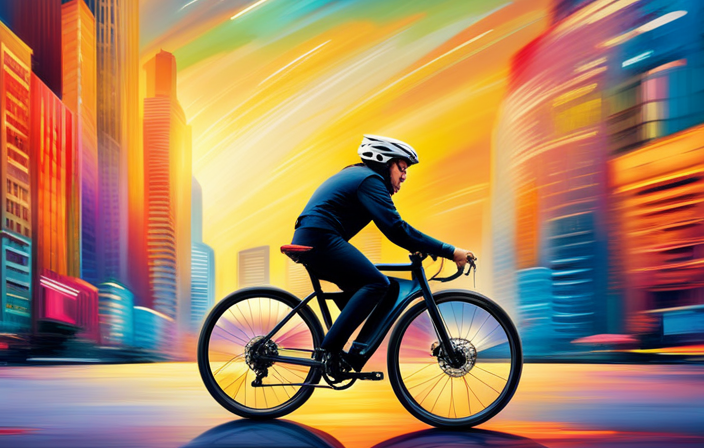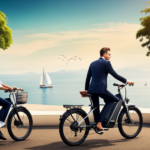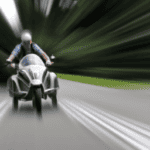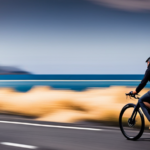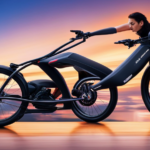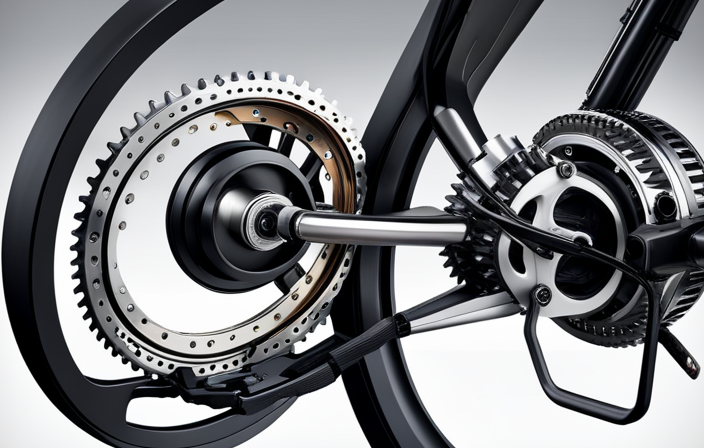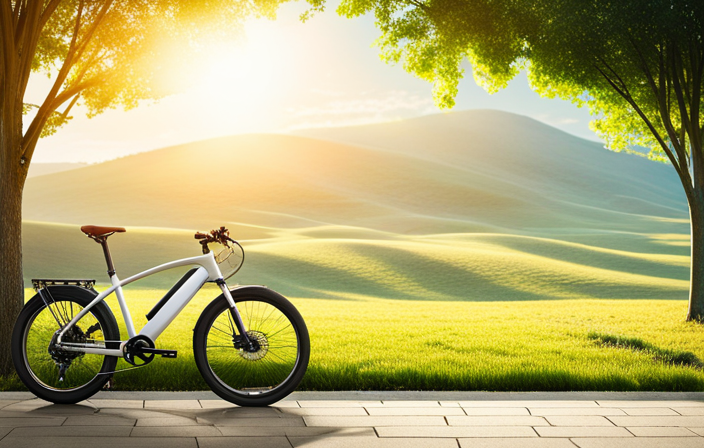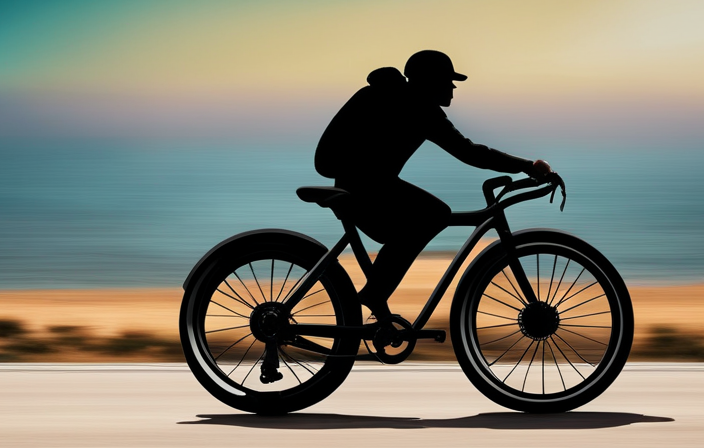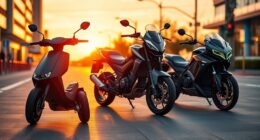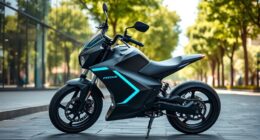I know what you might be thinking: ‘How fast can an electric bike go?’ Well, let me tell you, electric bikes are capable of reaching impressive speeds.
In this article, I will delve into the factors that affect electric bike speed, the different classifications of electric bikes, and the legal speed limits you should be aware of.
Additionally, I’ll share tips on how to maximize your electric bike’s speed and discuss safety considerations when riding at high speeds.
Stay tuned for future developments in electric bike speed!
Key Takeaways
- Safety should always be prioritized when riding at high speeds on an electric bike
- Wearing appropriate protective gear, such as a helmet and gloves, is essential for safety
- Regularly checking and maintaining the brakes, tires, and lights of the electric bike is necessary for good working condition
- Future developments in electric bike speed include improvements in battery technology, aerodynamic design, and advanced motor systems
Understanding Electric Bike Speed Limits
To understand electric bike speed limits, you should know that they typically range from around 20 to 28 miles per hour.
The speed limit of an electric bike is influenced by various factors affecting acceleration. One of these factors is the power of the motor. Bikes with more powerful motors can achieve higher speeds.
Another factor is the weight of the bike and rider. Lighter bikes tend to accelerate faster and reach higher speeds.
Additionally, the terrain and road conditions can impact the speed limit. Uphill terrains and rough roads can slow down the bike.
It’s worth noting that some riders opt for speed tuning, which involves modifying the electric bike to increase its speed limit. This practice has its benefits, such as allowing riders to reach higher speeds and cover longer distances. However, it’s important to consider the legal implications and safety precautions associated with speed tuning.
Moving on to the factors affecting electric bike speed…
Factors Affecting Electric Bike Speed
You can increase the speed of your e-bike by considering various factors. Here are three key factors that can impact electric bike acceleration and speed:
-
Motor Power: A higher wattage motor can provide more power and torque, resulting in faster acceleration and higher top speeds.
-
Battery Capacity: The capacity of your battery affects how long it can sustain the motor’s power output. A larger capacity battery can maintain higher speeds for longer periods.
-
Weight: The weight of the rider and any additional cargo can significantly impact electric bike speed. The heavier the load, the slower the acceleration and top speed.
Considering these factors can help you optimize the speed and performance of your e-bike.
Now, let’s delve into the different classifications of electric bikes, examining their unique features and capabilities.
Classifying Electric Bikes
If you’re unsure about the different classifications of e-bikes, understanding their unique features and capabilities can help you choose the right one for your needs. When it comes to electric bike performance, there are varying factors to consider, including speed and power.
Electric bikes are typically classified into three main categories: Class 1, Class 2, and Class 3. Class 1 e-bikes provide pedal assistance up to a maximum speed of 20 miles per hour, while Class 2 e-bikes have a throttle that can propel the bike up to the same speed without pedaling. Class 3 e-bikes, on the other hand, can assist pedaling up to 28 miles per hour.
These classifications allow riders to select an electric bike that aligns with their desired speed capabilities. Understanding the different classifications is essential before exploring the legal speed limits for electric bikes.
Legal Speed Limits for Electric Bikes
Understanding the legal speed limits for e-bikes is crucial when considering which classification aligns with your desired riding experience. Electric bike speed regulations vary depending on the country and specific jurisdiction. In general, most countries have set speed restrictions on e-bikes to ensure safety for riders and other road users. To give you an idea of the speed limits for different classifications of e-bikes, refer to the table below:
| Classification | Maximum Speed Limit |
|---|---|
| Class 1 | 20 mph |
| Class 2 | 20 mph |
| Class 3 | 28 mph |
| Class 4 (Moped) | Varies by location |
These speed limits are meant to provide a balance between the benefits of electric assistance and the need to maintain safe speeds on the road. Now that you understand the legal speed limits, let’s explore the average speeds of electric bikes.
Average Speeds of Electric Bikes
The average speeds of e-bikes can vary depending on factors such as terrain, rider weight, and battery life. Electric bikes offer several benefits when it comes to speed.
Compared to traditional bikes, e-bikes can provide a faster and more efficient mode of transportation. On average, e-bikes can reach speeds of up to 20 miles per hour, allowing riders to cover distances more quickly. This increased speed can be especially advantageous when commuting or running errands.
Additionally, e-bikes offer the flexibility to adjust speed settings, making it easier to navigate uphill climbs or tackle headwinds. However, it is important to note that these speed comparisons are approximate and can vary depending on individual factors.
Now, let’s delve into the world of top speed electric bike models.
Top Speed Electric Bike Models
To find the fastest electric bike models, you’ll want to consider factors like motor power, battery capacity, and aerodynamics.
Electric bike acceleration is dependent on the motor power, which is measured in watts. The higher the motor power, the faster the bike will accelerate.
Battery capacity also plays a crucial role in determining top speed. A larger battery capacity means the bike can maintain its top speed for a longer duration.
Additionally, the weight of the bike and rider can impact the overall speed. A lighter bike will have better acceleration and higher top speeds. By reducing unnecessary weight, such as removing accessories or using lighter components, you can further enhance the speed of your electric bike.
Now let’s explore some tips for maximizing electric bike speed without sacrificing safety or efficiency.
Tips for Maximizing Electric Bike Speed
If you want to maximize your electric bike’s speed, you should focus on optimizing the motor power, battery capacity, and overall weight.
To start, maximizing battery life is crucial. You can achieve this by using a high-capacity battery and ensuring it is properly charged and maintained. A well-maintained battery will provide consistent power output, allowing for faster speeds.
Additionally, optimizing motor performance is key. Make sure your motor is in good condition, properly lubricated, and aligned. Regular maintenance and tuning can significantly improve its efficiency and speed.
Lastly, consider the overall weight of your electric bike. Keep it as light as possible by removing unnecessary accessories and using lightweight materials. A lighter bike will require less power to reach higher speeds.
By focusing on these factors, you can experience the thrill of maximum speed on your electric bike.
When riding at high speeds, safety considerations become even more important.
Safety Considerations at High Speeds
When riding at high speeds on your electric bike, it’s important to prioritize safety. High speed accidents can be particularly dangerous, so it’s crucial to take the necessary precautions.
First and foremost, always wear the appropriate protective gear. This includes a well-fitting helmet, sturdy gloves, and durable clothing that provides full coverage. Additionally, consider investing in knee and elbow pads for extra protection.
It’s also important to regularly check your bike’s brakes, tires, and lights to ensure they are in good working condition. Maintaining a safe distance from other vehicles and being mindful of road conditions can further reduce the risk of accidents.
By following these safety guidelines, you can enjoy the thrill of riding at high speeds while minimizing the potential dangers.
Looking ahead, future developments in electric bike speed will undoubtedly push the boundaries of what’s possible, offering even faster and more exhilarating rides.
Future Developments in Electric Bike Speed
As we’ve explored the safety considerations at high speeds, it’s important to also discuss the future developments in electric bike speed. With the growing popularity of electric bike racing, manufacturers are constantly pushing the boundaries of what these bikes can achieve.
Technological advancements play a crucial role in enhancing the performance of electric bikes, allowing them to reach even higher speeds. Here are some exciting developments to look forward to:
-
Improved battery technology: Advancements in battery technology will allow electric bikes to have longer range and faster acceleration.
-
Aerodynamic design: Manufacturers are focusing on creating sleek and aerodynamic electric bike frames to reduce wind resistance and increase speed.
-
Advanced motor systems: Electric bikes will feature more powerful and efficient motors that can deliver higher speeds.
These developments are set to revolutionize the world of electric bike racing, providing riders with faster, more thrilling experiences on the track.
Frequently Asked Questions
Are electric bikes faster than regular bikes?
Electric bikes are faster than regular bikes because they have a motor that assists with pedaling. The efficiency of an electric bike allows for quicker acceleration and higher speeds, similar to a scooter.
Can I modify my electric bike to go faster?
Yes, you can modify your electric bike to go faster. There are several electric bike modifications that can increase its speed, such as upgrading the motor, battery, or controller for improved performance and acceleration.
What is the speed limit for electric bikes in my city?
What is the speed limit for electric bikes in my city? Are there electric bike rental options available? It’s important to know the safety regulations for electric bikes to ensure a smooth and enjoyable ride.
Are electric bikes allowed on the highway?
Yes, electric bikes are allowed on highways, but it’s important to prioritize electric bike safety. They offer numerous benefits like eco-friendliness, cost savings, and health benefits. However, it’s crucial to follow traffic rules and wear protective gear for a safe ride.
How does the weight of the rider affect the speed of an electric bike?
The weight of the rider can affect the speed of an electric bike. Heavier riders may experience slightly slower speeds due to increased resistance. Additionally, aerodynamic considerations play a role in maintaining optimal speed.
Conclusion
In conclusion, the world of electric bikes is constantly evolving, pushing the boundaries of speed and innovation. As we have explored, there are various factors that determine the speed of an electric bike, from motor power to weight and road conditions.
It is fascinating to witness the advancements in electric bike technology, with top speed models reaching impressive velocities. However, it is crucial to remember that safety should always be prioritized, especially when riding at high speeds.
So, as the saying goes, ‘Speed thrills, but safety saves lives.’ Keep riding responsibly and enjoy the thrilling journey into the future of electric biking.
